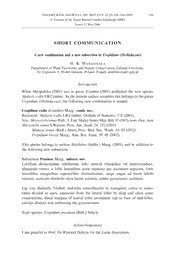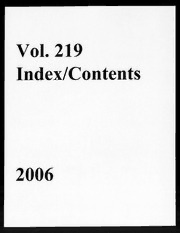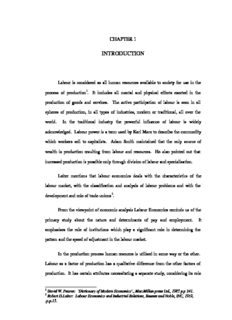
Economics of labour in the traditional handicraft industries of Kerala PDF
Preview Economics of labour in the traditional handicraft industries of Kerala
CHAPTER 1 INTRODUCTION Labour is considered as all human resources available to society for use in the process of production1. It includes all mental and physical efforts exerted in the production of goods and services. The active participation of labour is seen in all spheres of production, in all types of industries, modern or traditional, all over the world. In the traditional industry the powerful influence of labour is widely acknowledged. Labour power is a term used by Karl Marx to describe the commodity which workers sell to capitalists. Adam Smith maintained that the only source of wealth is production resulting from labour and resources. He also pointed out that increased production is possible only through division of labour and specialisation. Leiter mentions that labour economics deals with the characteristics of the labour market, with the classification and analysis of labour problems and with the development and role of trade unions2. From the viewpoint of economic analysis Labour Economics reminds us of the primary study about the nature and determinants of pay and employment. It emphasises the role of institutions which play a significant role in determining the pattern and the speed of adjustment in the labour market. In the production process human resource is utilised in some way or the other. Labour as a factor of production has a qualitative difference from the other factors of production. It has certain attributes necessitating a separate study, considering its role 1 David W. Pearee: ‘Dictionary of Modern Economics’., Mac.Millan press Ltd., 1983 p.p 241. 2 Robert D.Leiter: Labour Economics and Industrial Relations, Baunes and Noble, INC, 1959, .p.p.13. as an activating factor of other factors of production. We have in the present study concentrated our attention upon labour in traditional Handicrafts Industries of Kerala with particular reference to Thrissur District. Labour intensitivity is very high in Handicrafts industry, it has got prominent role in the production activity. The uniqueness of Handicraft Labour from other types of labour lies in its aesthetic and artistic values. This labour also requires special skill, talent and taste. Handicrafts labour has to be given a special importance considering the fact that this industry fetches valuable foreign exchange and also provides employment to about half lakh persons in Kerala. Besides, Handicrafts labour exhibits our true traditional culture and heritage. Mill has rightly remarked about the requisites of production which are two, labour and appropriate natural objects3. When labour is interacted with indigenous materials, like wood, screw pine leaves, clay, bamboo etc., we get a variety of products used in our day to day life. India being a highly populated nation supplies various kinds of labour. From time immemorial, the labour connected with the traditional industries of India and especially Kerala is having a wide global reputation. The rich labour of craftsmen and the artisans were transformed into the attractive craft forms and artworks widely seen through out the country from time immemorial. Handicrafts industry with the least interference of machines, expresses the true traditional labour of India. The importance of Handicrafts industry and Handicraft Labour was recognised by Father of the Nation, Mahtma Gandhi, decades ago. Handicrafts Industry Labour in India and particularly that of Kerala, falls under the following six categories, namely House hold Handicrafts Labour, Curio labour, making of Musical Instruments, crafting of goods of veneration, Labour involved in the making of articles used in festivals, and Handicraft Labour involved in the making of goods for classical arts. 3 J. S. Mill; Principles of Political Economy with some of their applications to social philosophy. Augustus M. Kelley Book seller, New York 1961, p. p 22 The focus of our attention is upon the Household Handicraft Labour involved in the making of goods like mat, pots, baskets and furniture used for household purposes. We have excluded the labour aspects of other craft forms for the greater clarity and precision in the present work. 1.1 Significance of the study Study of this kind deserves special attention since labour is an integral component of any economic activity. The study is a labour oriented one which is focussed on the different dimensions of labour associated with a traditional industry like Handicrafts Industry which is considered as the oldest industry in our country. Labour in Handicrafts Industry deserves special significance since it requires special skill, talent and taste. Handicrafts Labour is popular in India and else where because of its uniqueness and aesthetic skill. Indian Handicrafts enables us to get valuable foreign exchange for our country and it also provides employment to large sections of the people. Thus, Handicrafts Labour has a micro as well as a macro significance. Handicrafts Labour is highly catylistic in local as well as national level development. A study related to this area is helpful for the policy makers in chalking out suitable policies benefiting the industry as well as the labourers. 1.2 Review of literature The Handicraft Industry, a traditional one, is the oldest industry in India, especially in Kerala. Few attempts have been made by the economists to study the labour aspects of this industry. Literature connected with the Handicrafts Industry can be broadly grouped in the following manner; a) Literature related with the marketing aspects of the Handicrafts products. b) Attempts related with the working of the co-operative society. c) Literature related with problems and prospectus of the Handicrafts industry. The need for winding up the dormant, co-operative societies in the state and reviving the existing handicraft societies was the main recommendation made by the state Department of Industries and Co-operation. This recommendation was based on a survey regarding the working of Handicrafts societies in the state. The study conductedby Pillai (1965) emphasised the uniqueness and quality of Handicrafts products of Kerala, he suggested the formation of Handicrafts co-operative societies and their proper management for giving new vigour and prosperity to the industry. The focus of attention given by Menon (1978) was on the quality decline of Handicrafts industry due to foreign rule. Menon also observed about the positive aspects of interaction of the craftsman with the different civilizations and opined that this interaction helped craftsmen to evolve exquisite designs and patterns of various handicrafts. Menon’s methodological frame was mainly based on the secondary data of the pre-independence era. Myrdal’s (1968) treatment was on the adverse effect of modern mechanised industries on cottage and Handicrafts Industries. He expressed the concern regarding the unhealthy competition between modern mechanised industries and Handicrafts industries. The study recommended for a strong organisational co-operative set up to ensure healthy competition. Myrdal argued for government protection to limit the competition by the modern industries over cottage industries. The working group argued about the urgent need for developing and protecting the handicrafts industry through a cooperative base which in turn is essential for the sustainability of the craftsmen in the country. Kamat (1986) stressed the need for eliminating the intermediary exploitation of the craftsmen and suggested a co-operative marketing system for the handicrafts products. His method of analysis was primarily based on the observation on the small handicrafts producers. Ray (1986) analysed matters related to the exports or import of handicraft products. He emphasised on the strong participatory role in importing necessary inputs for handicrafts industry. Thaimoni (1987) has dealt with the defective sides of co-operative marketing. Mane (1987) in his study, pointed out that the artisans are not properly organised in their various activities, which is revealed in the meagre membership in the artisans co-operative society. He also pointed out that these artisans are unaware of the need for mutual co-operation and understanding. He opined that the major problems of public and co-operative handicrafts marketing are lack of quality, lack of proper time schedule in receiving order, and more over production without taking into account the market potentiality of the products. Samuel Kutty (1992) highlighted that crafts is man’s first technology, the technology of handicrafts cater to the everyday needs of people belonging to all classes for items which combined utility and beauty. Sinha (1993) felt that almost every Indian Handicraft has a constant and boundless demand in foreign and home market. He also prescribes for the speedy identification of the real needs of the marketing society. Kebshully (1994) through his work attempted to convince the negative influence of imports over Indian Handicrafts products. He acknowledged that the Handicrafts industry is capable of producing high profile goods with a low capital investment. Ray (1986) in his study observes that although Handicrafts products are helpful in earning valuable foreign exchange, the artisans and craftsman are trapped in a state of poverty. Rao and Rao (1995) highlighted the view that co-operative societies are highly helpful in solving many of the problems faced by the artisans and craftsmen. Sandria (1997) pointed out that the Handicrafts industry is on a difficult situation due to the lack of infrastructural facilities. And he adds that if it is adequately provided, the massive potential of handicrafts industry can be well utilised. Khatai (1996) promulgated that entrepreneurial activity in the handicrafts industrial sector is still meagre to living out considerable movement towards progress and prosperity. Reddy (1998) emphasised the developmental objective of Handicrafts industries to absorb surplus rural labour force in non-agricultural occupations to reduce regional disparities and promote rural employment. Murthy (1998) in his study showed the importance of rural industrialisation especially Handicrafts industry in the sense that it provides subsidiary income, helps to distribute the workforce, raises the living standard of the weaker sections, increases the use of local source and promotes creative talent. The study conducted by Jain (1986) regarding the progress of Handicrafts Industry during 1955-85 highlights that the incremental employment in the period was lower relative to increase in production and exports. He also pointed out that large scale mechanisation is a great threat to the development of the Handicrafts Industry. Because of its steadily losing ground, in spite of all efforts to preserve them, he also stresses that the craftsmen are hard to work sweating away for the economy and it is the time for the policy maker to lift his little finger in their favour. Menon’s (1978) study was mainly regarding the hereditary nature of Handicrafts Labour and he took note on the recent trends of the entry of various communities to this field. Gurpur’s (1992) attempt was sociological. He propounded that handicraft ensure brotherhood and co-operation in a society which also ensures social harmony. He expressed that crafty wood works create many self-employment opportunities particularly for women. It has the advantage of less investment and indefinite possibilities for the Indian rural population. The different dimensions of contract labour was the focus of study made by Rao (1998). Iyyer (1999) in his study mentioned that the cottage industries are mainly dominated by backward labour class, and raw material scarcity is the main problem faced by this industry. Subrahmaniam (1994) noted that an increasing dominance of handicrafts is an out come of its orientation to exports and scattered domestic markets. Historical aspects of handicrafts, especially pottery, was the main focus of attention given by Nayak and Manivannan (1998). Besides, they have also made an attempt to define handicraft in the context of India’s cultural heritage. Kathuria (1986) has undertaken a case study to examine the trends in the export of Indian handicrafts and opined that this industry is among the most efficient foreign exchange earners in our economy. Mane (1987) examined that only a small percentage of handicraft products are marketed through the public agencies, rest is handled by private traders. Mane highlighted the lack of attention given by the governmental institutions in attending to the essential needs of artisans and craftsmen. Sreerangi (1987) critically evaluates the policy benefits which accrue to the craftsmen and artisans. He found that all these measures are unsuccessful in controlling the exploitation of the artisans and the craftsmen. Bell (1964) observed that though marketing channels are commonly regarded as a variable aspect for marketing of the manufactures, too often, channel relationship does not receive due attention, since they involve matters that are outside the production limits. Antony (1986) revealed that the status and the role of marketing channel members, the type of institutions and the number of stages determine the structure of marketing channels. Parashwar (1969) stresses about the importance of marketing channels for the smooth flow of handicraft goods. Martin Zober (1964) explained that there is no such thing as the single channel of distribution that works best for any specific product, especially handicrafts. The main theme of the study done by Dak (1989) is about the growing world demand for decorative handicraft products. Maynard and Beckman (1952) conducted their study connected with grouping products, packing, storage, transportation and also other needy input-output marketing services. Douglas (1975) emphasised the length of the channel as the function of the characteristic of the product of its demand and supply and of the cost structure of the marketing firms that integrate the demand and supply. Gopalan (1966) opined marketing efficiency in marketing co-operatives can ensure the produce members to get reasonable price for his produce by reducing the price spread between the producer and the consumer. Sharma (1981) rightly remarked that improving the efficiency of marketing through co-operatives means leaving the cost per amount of moving products from the producer to the consumer and without hurting anyone involved in the process to the extent of forcing him out. Suraj (1982) also remarked that private traders have played a dominant role in the field of Handicrafts marketing. Upadhyay (1973) has made an attempt to go into dimensions like designing, quality control and marketing of handicraft industries. Wright (1959) has dealt with the intellectual craftsmanship and he opined that the sociological conditions of the craftsmen has got a big role to play in framing the craftsmanship of a craftsmen. Although much data have been churned out on traditional handicrafts industry, a few attempts have been made by the economists to study the labour aspects of the handicrafts industry. Therefore, policy makers and the planning authorities simply rely on the statistics collected for general purpose although they cannot carry information to indicate the economic dialectics, especially the labour related affairs of the handicrafts industry. The present study therefore focuses its attention on “Economics of Labour in the Traditional Handicraft Industry of Kerala”, giving a particular emphasis on Thrissur District. 1.3 Methodology The research is undertaken with a particular focus on labour in the traditional handicrafts industry of Kerala, giving a special emphasis on household handicrafts labour in Thrissur area. For this purpose we have selected four household handicraft forms which have a great representation for the whole state of Kerala. Thrissur, the cultural capital of Kerala has a great concentration of various craft forms, artisans, and craftsmen. This is the reason why we have selected Thrissur as our sample District. The objectives are realised mainly with the help of primary data collected exclusively through interviews, discussions, conversations with craftsmen and crafts women based on a pre-tested questionnaire. The secondary data are also used for realising our objectives. Participatory Research Appraisal was widely applied while collecting data from the sample locations in the District. Instead of collecting data from a particular area of the district, we have randomly selected the sample labour units from the three Taluks, namely, Thrissur, Kodungallur, and Mukandapuram. Before starting the data collection sample areas were clearly plotted in Thrissur District Map. Besides the general mapping of the District, we have also done particularly the mapping of the different villages to which these sample households belong. Identification of the sample households were done through visiting important marketing centres of the district such as in Kodungallur, Chalakudy, Chavakkad, Thrissur and Irinjalakuda. Secondary data available from SISI, District Industries Centre, Surabhi, Kairali and state Handicrafts Development Corporation were also utilised for this purpose. For analysing the first objective, we have attempted to corelate labour with the following variables like gender, caste and community and age. The second objective of the study is to analyse the various types of inputs used in Handicrafts other than labour. Data connected with the inputs like raw materials money and other agents of production, are gathered from the field survey as well as from the secondary data. For studying the socio-economic aspects of craftsmen and crafts women, we have taken indicators like education, housing conditions, saving and income. Inflow and outflow method is also used for assessing the economic conditions of the labourers in the traditional Handicraft forms.
Description:The list of books you might like

The 48 Laws of Power

Credence

Corrupt (Devil's Night #1)

As Good as Dead

Structured glass-fiber catalysts

Live and let live
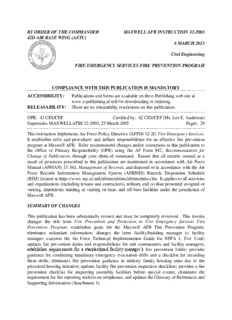
BY ORDER OF THE COMMANDER MAXWELL AFB INSTRUCTION 32-2003 42D AIR BASE WING ...

Cento Anni di Ricerca Petrolifera(1)
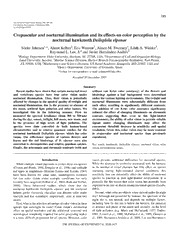
DTIC ADA519442: Crepuscular and Nocturnal Illumination and Its Effects on Color Perception by the Nocturnal Hawkmoth Deilephila elpenor

Vitis vinifera subsp. vinifera cv. Marselan
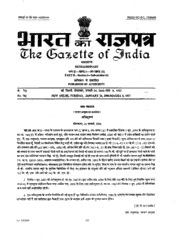
Extraordinary Gazette of India, 2006, No. 27

Knowledge and employability : social studies grades 8 and 9
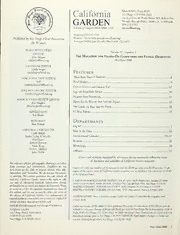
California Garden, Vol. 97, No.3, May-June 2006

Mass Appeal Magazine 38

RIHS Watchtower 2006
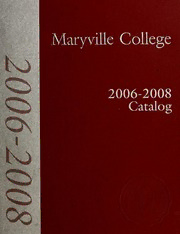
Maryville College Catalog 2006-2008

C anton © bser U cr

Stimme und Sprache

C anton €>b£crUer
![Quantenmechanik [Quantum Mech - IN GERMAN] book image](https://cdn.pdfdrive.to/media/content/thumbnails/c339d3e1-fb21-49fc-9adc-8c827d6bafd0.webp)
Quantenmechanik [Quantum Mech - IN GERMAN]
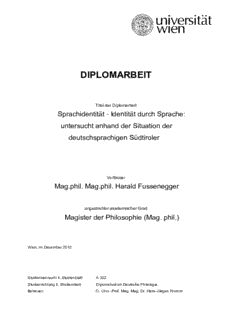
Südtirol/Alto Adige/Südtirol
